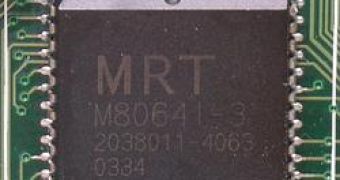Flash memory is a non volatile memory device that is capable of storing information even after the power source is removed. While the end effect is the same, long-term data storage, flash memories work on a very different principle than other non-volatile storage devices like tapes, optical media and hard disk drives. A non volatile memory device simply means that once data is written on the device, it is stored for a long time without the need of a power supply.
While tapes and hard disk drives use a magnetic effect in order to store data and optical mediums are using the trenches on their surface for the same purpose, the flash memories take a different route as they store electrical charges for extended periods of time using a mechanism known as a floating gate. That gate simply traps the electric charge in a memory cell and surrounds it with an insulating material.
Like all other computer hardware components based on transistors, the flash memory obeyed Moore's Law too, doubling its storage capacity around every 24 months or so. However, there is a limit of the level of miniaturization a floating gate can sustain before it starts leaking its electrical charge. When that leakage occurs, the data stored is irremediably lost or corrupt. Another problem is that by narrowing the insulating materials, nearby memory cells might interact with each other, which leads to data corruption too.
But it seems that the company Nanosys has the solution for the floating gate's further miniaturization, as Don Barnetson explained in an interview. According to him, it may be possible to reduce the amount of insulating material between nearby floating gates, by simply building the gates from metal nanocrystals. By eliminating some of the insulating material, flash memory densities could be increased. While the concept of floating gates built by metal nanocrystals is not something new, it has never been used for the mass production of flash memories.

 14 DAY TRIAL //
14 DAY TRIAL //